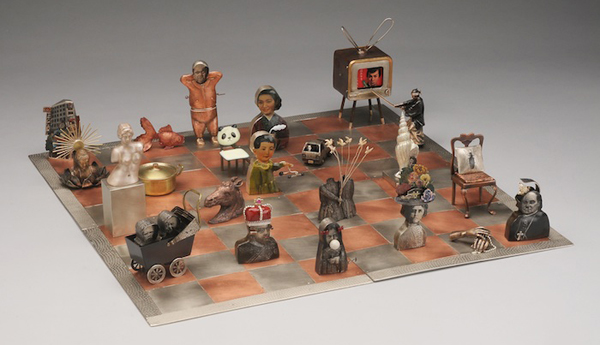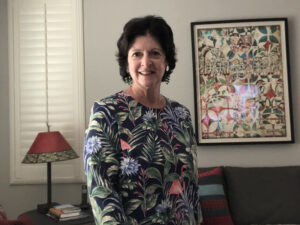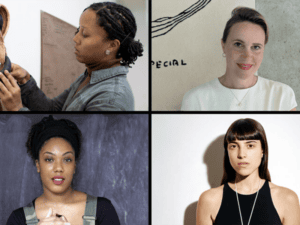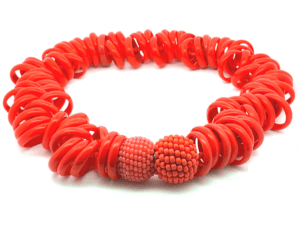Mobilia Gallery in Boston, Massachusetts, has been exclusively representing Mariko Kusumoto for many years. The gallery is owned and run by the sisters Joanne and Libby Cooper. They represent many major craft artists in a variety of media but jewelry has always had a strong presence. Mariko exists on the edge of jewelry making. In other words she sometimes makes jewelry but she mainly makes magical boxes and sometimes they contain jewelry. Her fertile imagination and unusual background have lead to some wonderful pieces, which we will discuss in this interview.
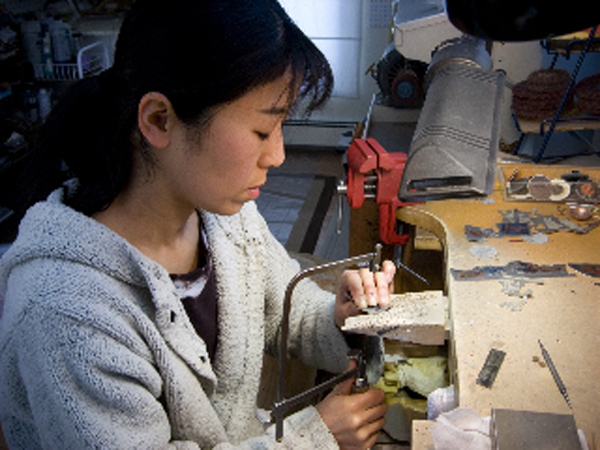
Mariko Kusumoto: I was 23 years old.
Did you study jewelry and metal work here or in Japan? Tell us about your training.
I attended a high school that offered a fine art major, where I learned the basic skills of drawing, sculpture, design and painting. After that I went to Musashino Art College in Tokyo. For the first two years, my major was oil painting and then I transferred to printmaking, focusing on etching. I moved to San Francisco and attended the Academy of Art University, where I pursued printmaking. However right before I graduated, I took a book art class and also beginner and intermediate jewelry and small metal art sculpture classes, which completely changed my direction from two-dimensional work to three-dimensional. I’m not a printmaker anymore but I use etching techniques for much of my work. When I was into printmaking, I was always fascinated by etched metal more than by the printed images on the paper.
When did you decide to make pieces with multiple parts using these few techniques? Can you describe the process of discovery?
When I was a printmaking major, I felt awkward because everything is backwards when you are working on the plate and once the lines are incised in the metal plate it’s hard to correct them. The images needed to be planned ahead of time and I couldn’t expect very much of an accidental quality in the work. I was frustrated with the indirect method of printmaking. When I started to work in three-dimensions, I became free. I enjoyed playing with space and liked the accidental quality. Although complicated techniques are unnecessary to achieve what I want to express, I always like to experiment with new techniques in metal and also different materials.
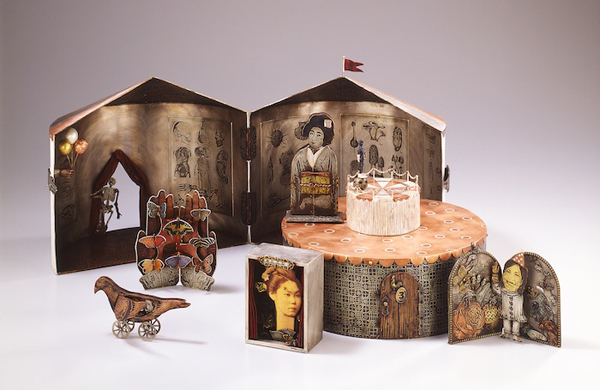
Your work has been compared as Joseph Cornell boxes, nostalgic puppet shows and paper dolls, children’s toys and surreal worlds. What do you think they are?
When I was a child, everything was filled with mystery and marvels. Stones, insects, wood grains, rusted metal, shells, shapes of clouds, the smell of erasers, hollows in stepping stones created by years of raindrops, mysterious objects emerging from my grandmother’s dresser drawer . . . I used to find unlimited meaning, surprises and universes in them. As adults, those things become just normal, ordinary and valueless and they no longer surprise us anymore. As children we were imaginative and able to go between the real world and the unreal world freely. The passage of time deprives us of this poetic and marvelous world and a stone becomes just a stone.
Sometimes people compare my work and Joseph Cornell’s work. If grown-up viewers see my work or his work and it evokes nostalgic feelings, there might be something in the artwork that triggers something they’ve lost or forgotten since becoming adults. Inside the boxes, which detach time and space from the real world, I strive to create poetic and mysterious worlds. Not literal work but something that stimulates the viewer’s imagination while at the same time leaving some space and incompleteness for the viewer to participate or fill in with their imagination. Using the surreaIist technique of irrational juxtaposition, I assemble found objects, etched images and photos.
Recently you started to video your pieces using stop action. What inspired you to start doing this? Were you inspired other artists or filmmakers in particular?
When I was a student, I saw in class the film Street of Crocodiles, directed by the Brothers Quay. I was deeply moved, not only by the beauty of each scene but also by the combination of music and the movement. I thought that this is the most powerful art form. I often imagine that the pieces are moving and talking while I’m creating them. Although I like art as a quiet, still form, I want to give life to them using stop-motion techniques. I want to give life to them using stop motion technique.

The images came from a copyright-free book called Bloomingdale’s Illustrated 1886 Catalog, reprinted by Dover Publications. I was very fascinated by the detail of the images and at the same time it has a surreal and mysterious quality to it. Inside the house-shaped exterior box, there are seven pages, which represent the different floors and there are different things displayed. After opening all of the floors, there is a dress-shaped dresser on wheels, with wearable pieces included in the drawers.
How about the Sideshow box?
I’m attracted by the mysterious and spooky atmosphere that circuses and sideshows have. In my Sideshow piece, there are rooms for the five performers inside the tent. Each one of them can perform.
Do you enjoy going to the movies? What have you seen lately of interest?
I enjoy watching movies, especially stop-motion animation, but I haven’t seen any movies lately.
